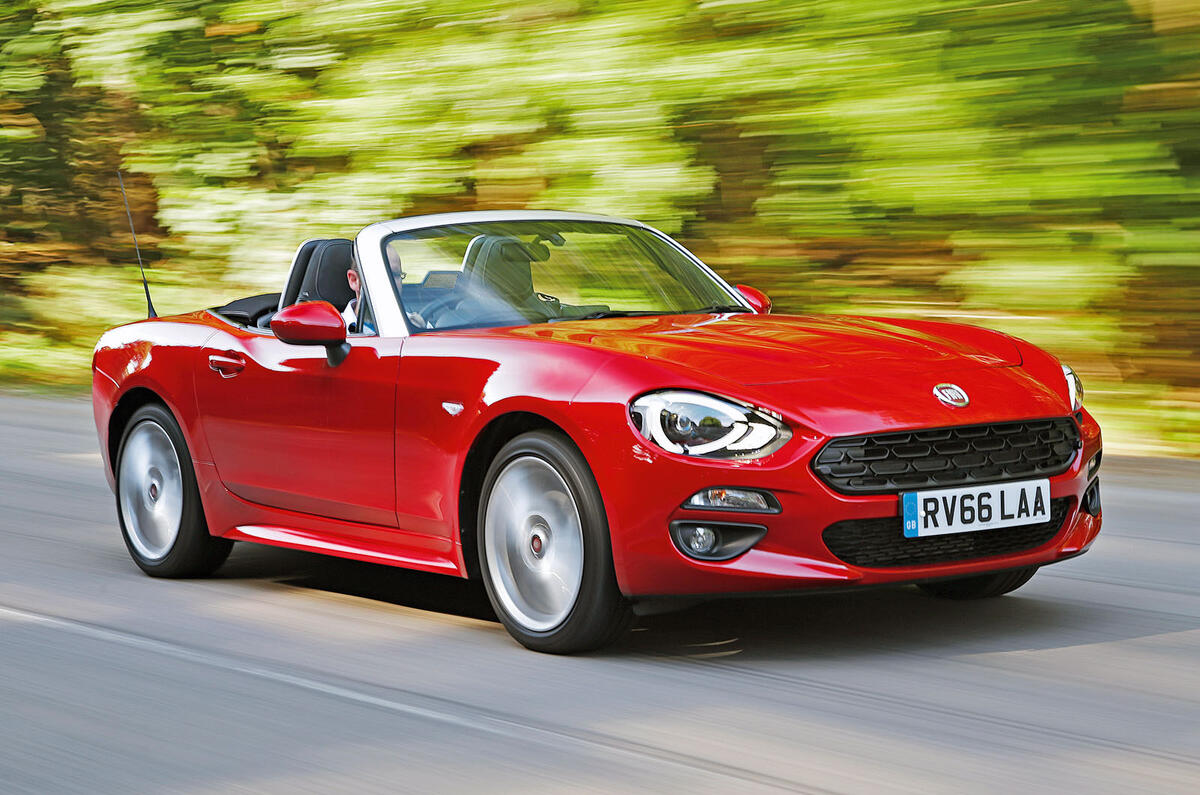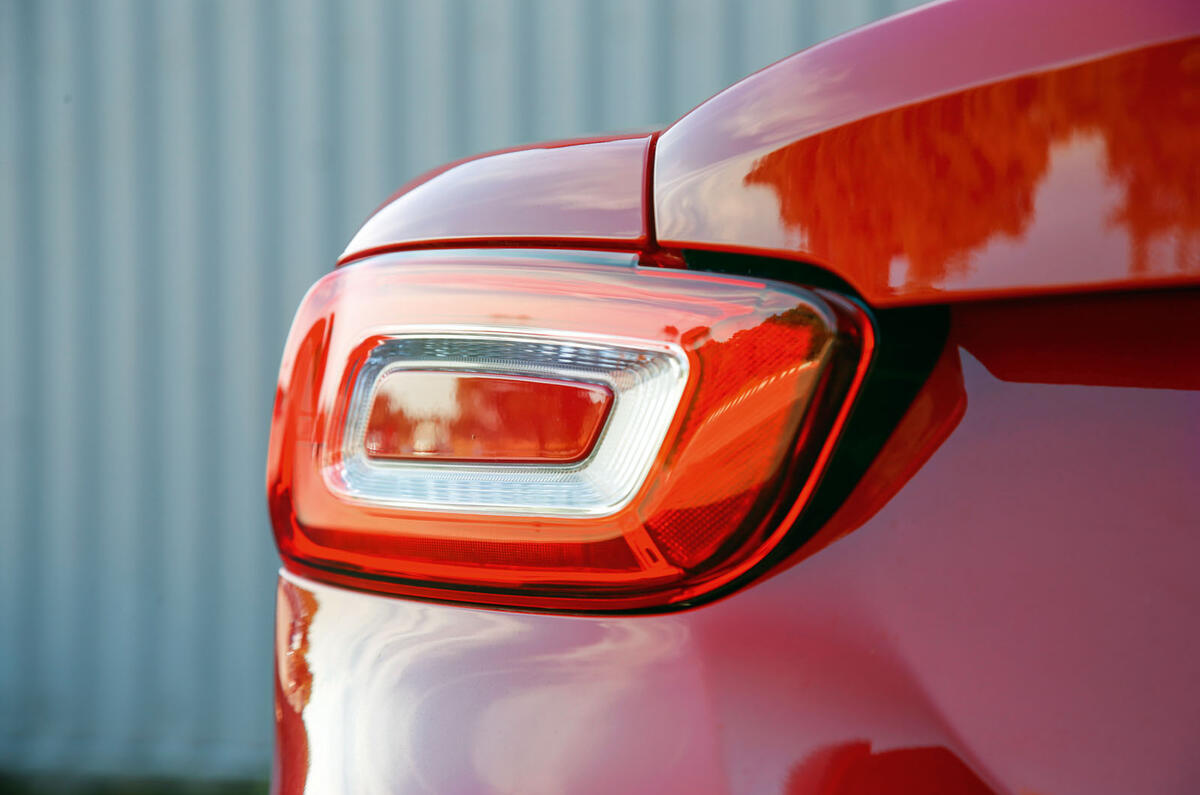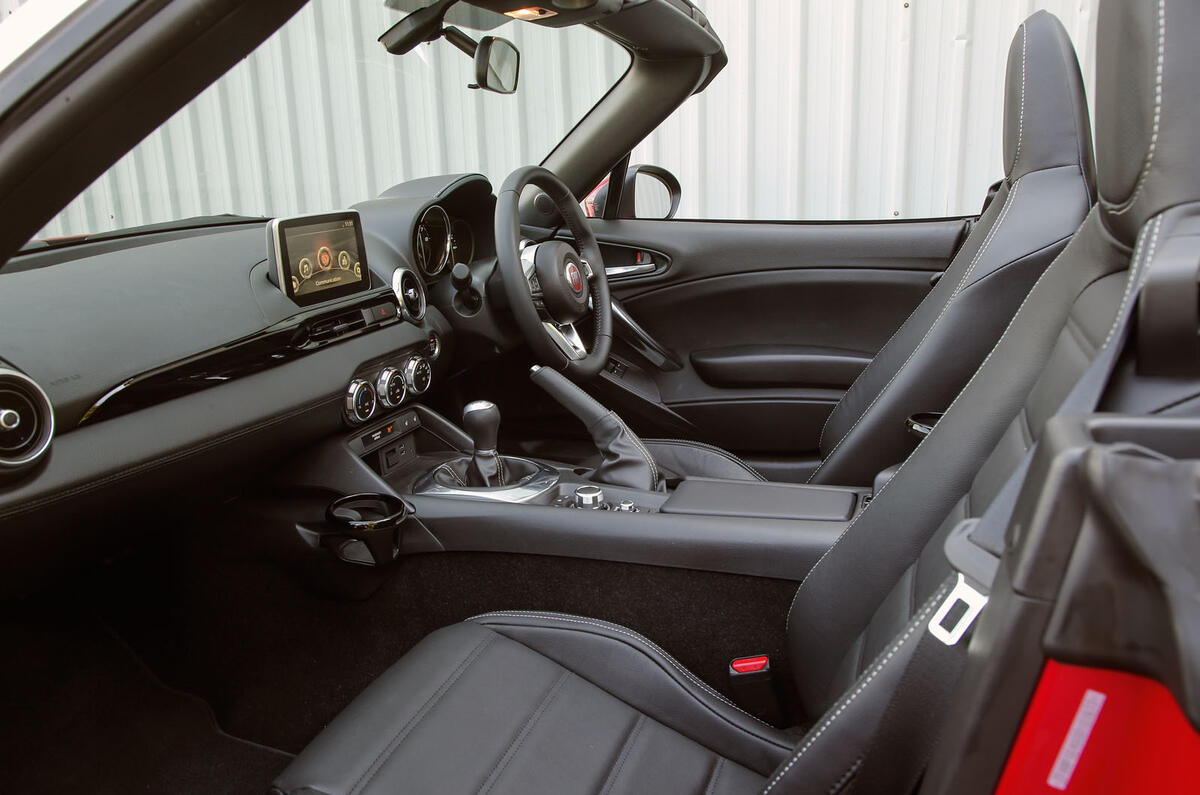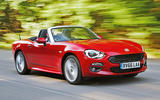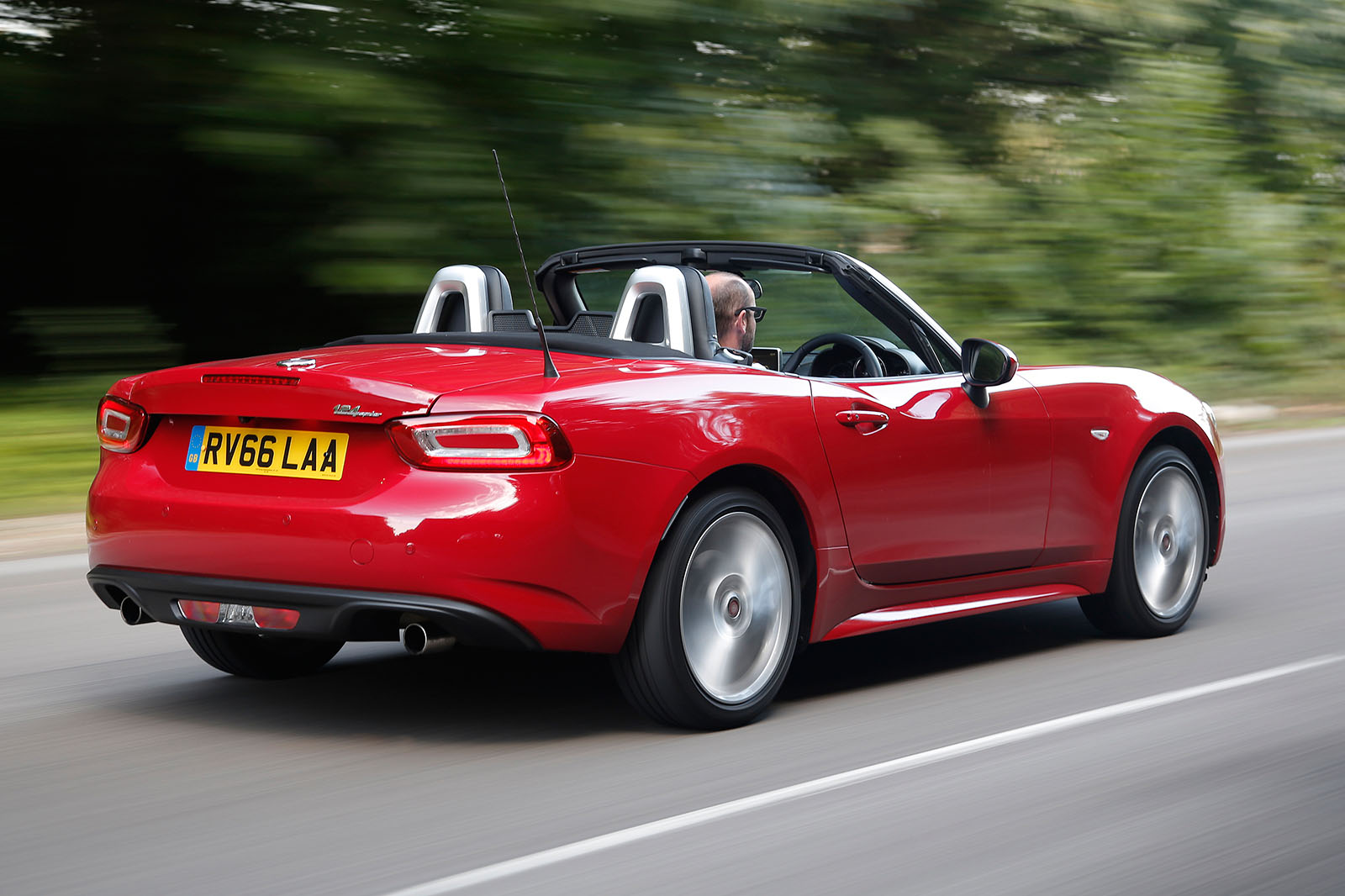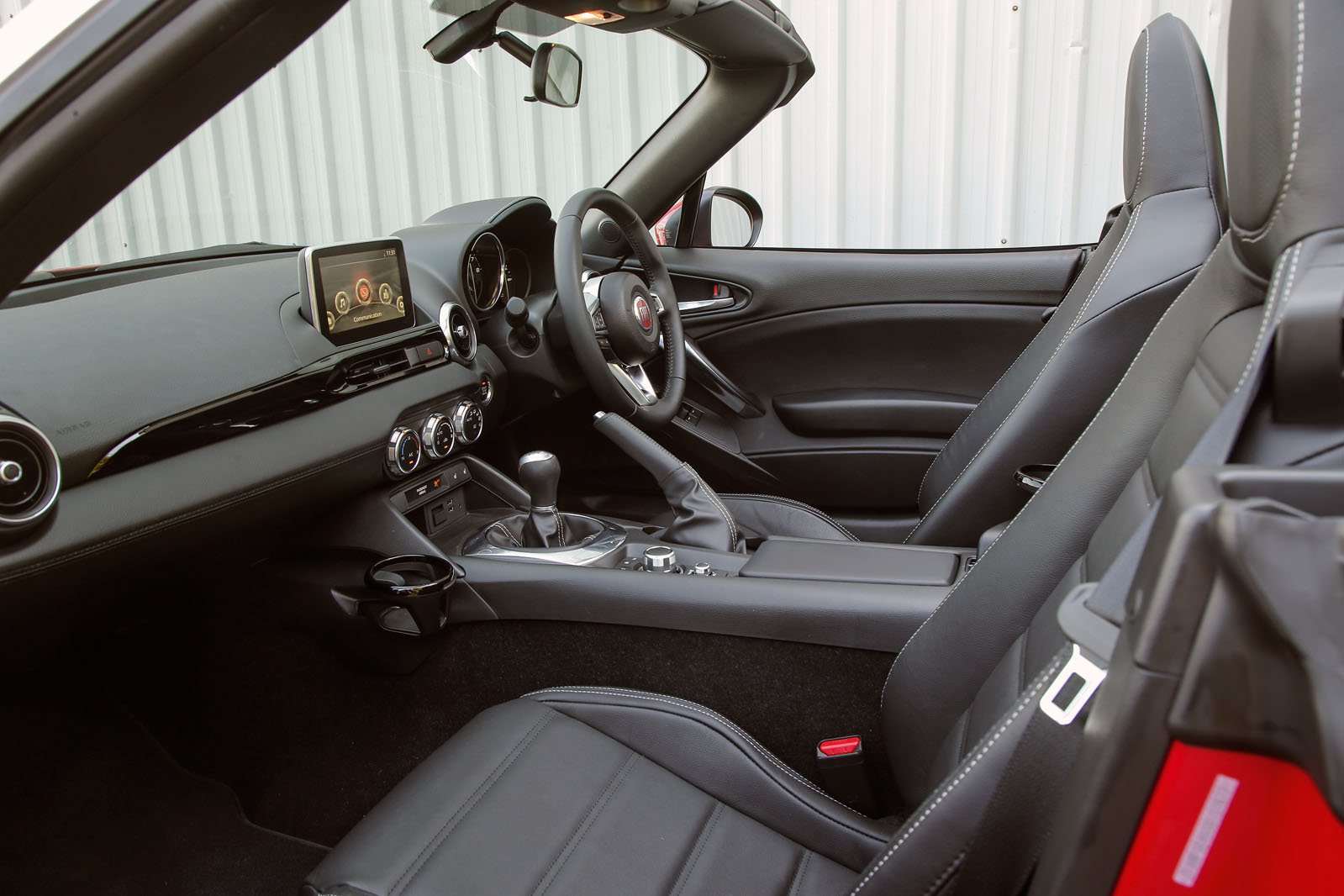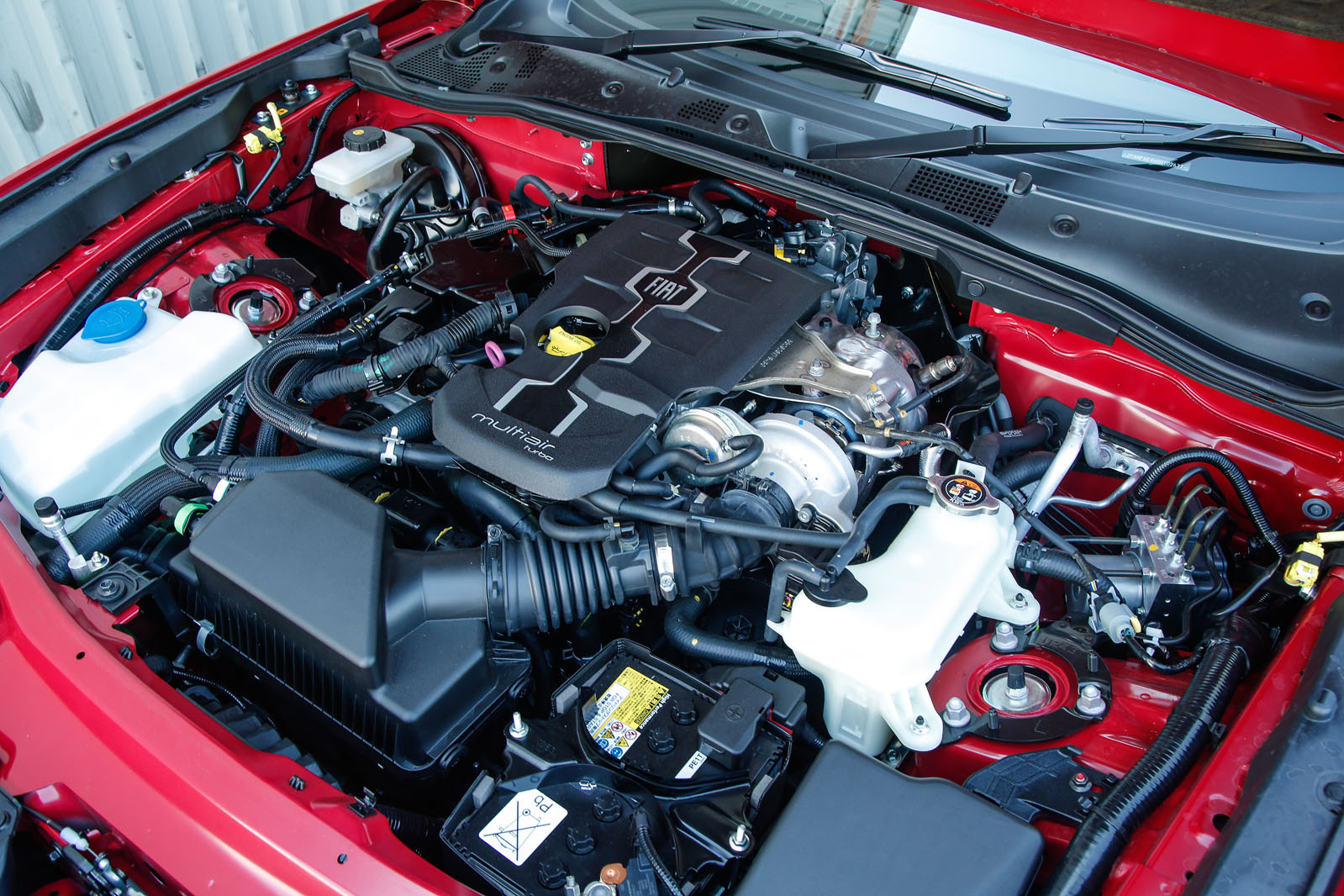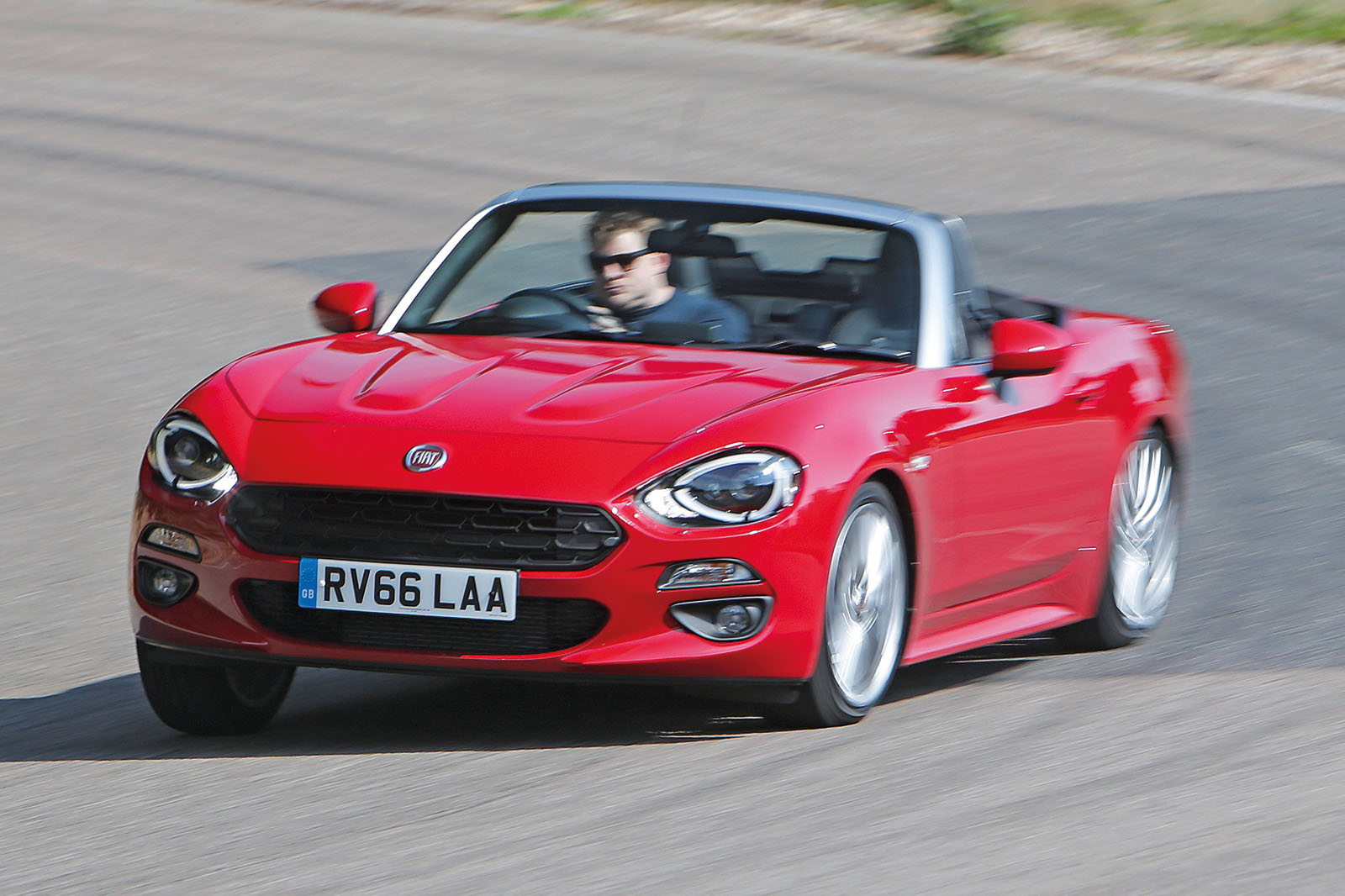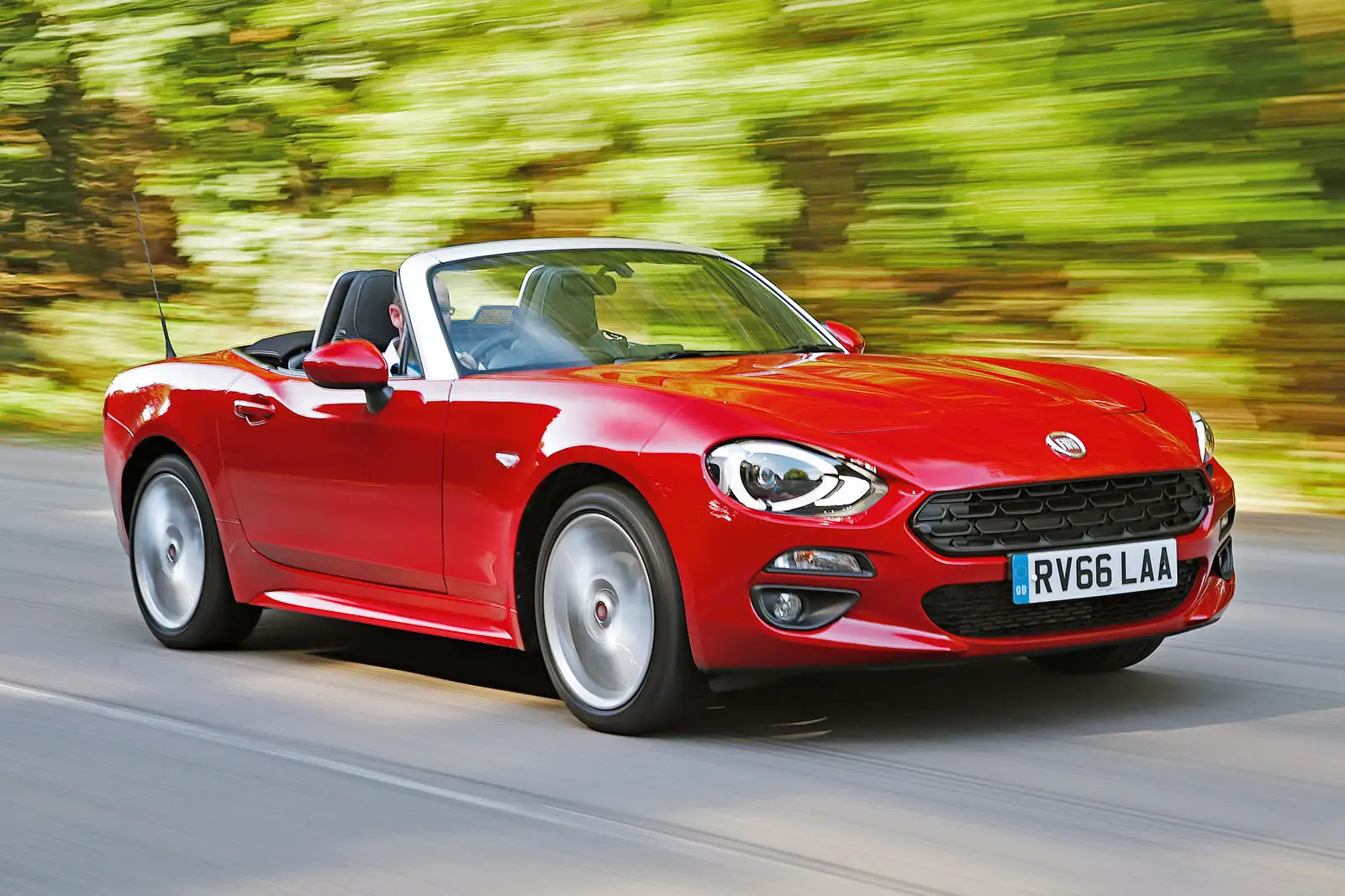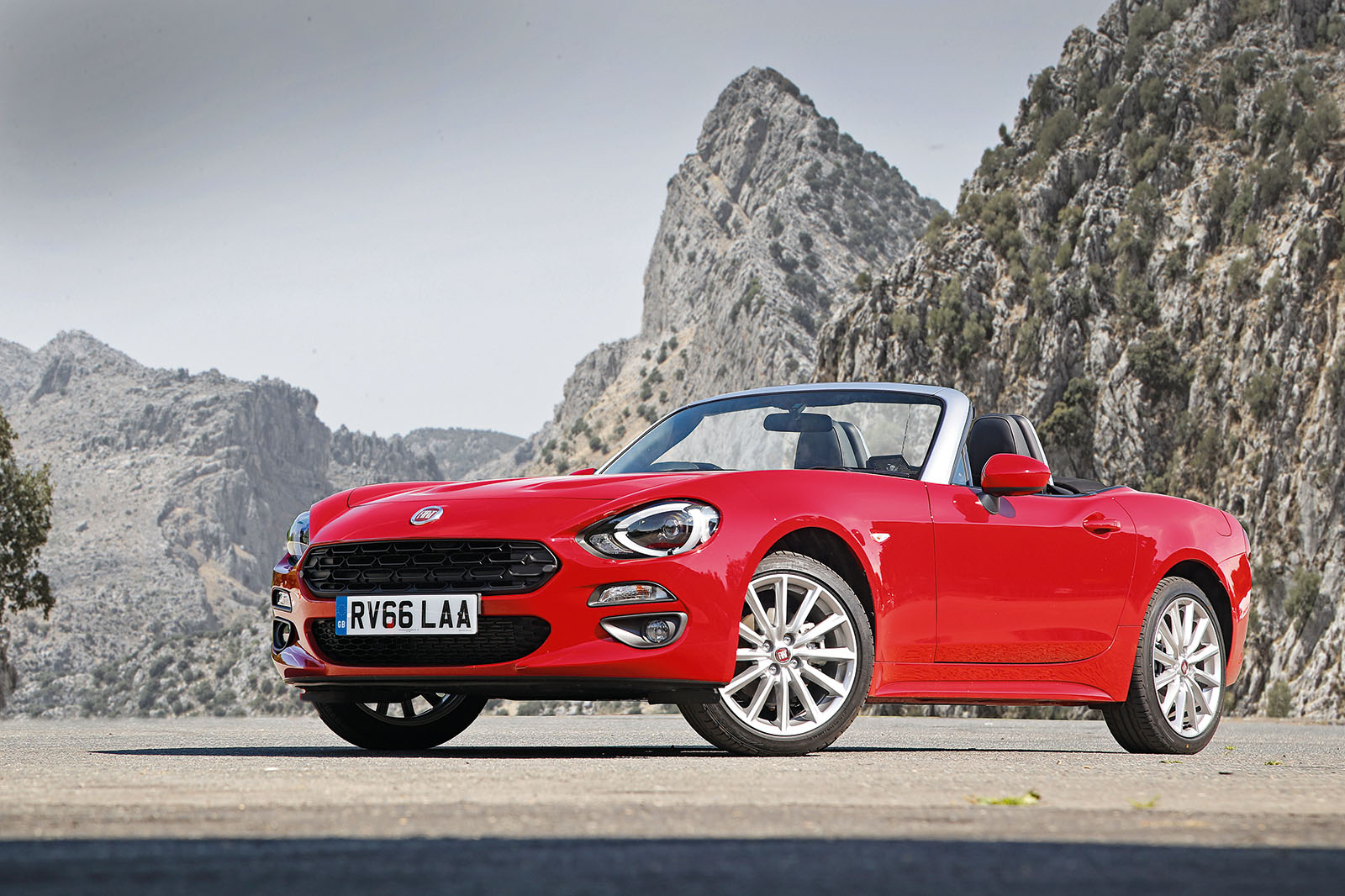While the exterior may strongly differ, the 124’s close relationship with the Mazda MX-5 is plain to see inside. Architecturally, nothing of note has changed; Mazda has even donated its infotainment software to the Fiat – save for a quick swapping of badge insignia on start-up.
In fact, faced with the two side by side, the exchange of logos is likely to be the most telling alteration for most people.
The decision to retain the MX-5’s infotainment system is symptomatic of Fiat’s approach to the 124’s cabin: there’s simply no getting away from the Mazda-ness of it. However, it pays dividends by virtue of the fact that the set-up is very effective and Turin has nothing better to replace it with.
As with the MX-5, you won’t get the 7.0in touchscreen at entry level without ticking a box, but you’ll need it when it’s time to sell on.
For the most part, it’s easy to operate. Mazda spent a lot of time figuring out its menus, and it shows in the home screen’s intuitiveness. Selections can be made via the command dial or by stabbing at the slightly hesitant display — the latter being preferable in the Fiat because the controller hides under your elbow.
Other minor niggles carry over: there’s still too much faff involved in choosing a station from the DAB list, and the sat-nav defaults to extreme pessimism when predicting your arrival.
On the entertainment side, the Lusso Plus comes with an upgraded Bose stereo, which is decent but not unmissable.
Nevertheless, there are tweaks, most notably to the upholstery on the dashboard and seats, where Turin has clearly endeavoured to inch the 124’s perceived quality upmarket with minimal investment.
The critical outcome of such superficial remodelling is twofold.
On the one hand, by not remaking the cabin as it has the body, Fiat has clearly staked the car’s reputation as a separate entity.
Like Infiniti’s recent failure to properly stamp its own identity on the Q30, Fiat’s deficit of input deprives the model – and its buyer – of one element that ought to have been undeniably brand-specific and therefore appealingly different.
On the flipside, and somewhat ironically, by not substantially changing anything beyond the incidentals, the firm has inherited arguably the best-looking and best-made interior of any car in its line-up.
Supremely well organised, coherent and concise, the comparatively tiny compartment swaddles you in natty charm even as it denies you the storage space to really put anything.
In this single respect, the 124 does claim one advantage: its slightly larger rear end delivers a marginally bigger boot.
You’ll have to take Fiat’s word for it, though, because our tape measure could find no real benefit to the dimensions we typically measure. Either way, like the rest of the cabin, the slender 10-litre advantage won’t be sufficient to persuade many people of the 124’s overall superiority.



